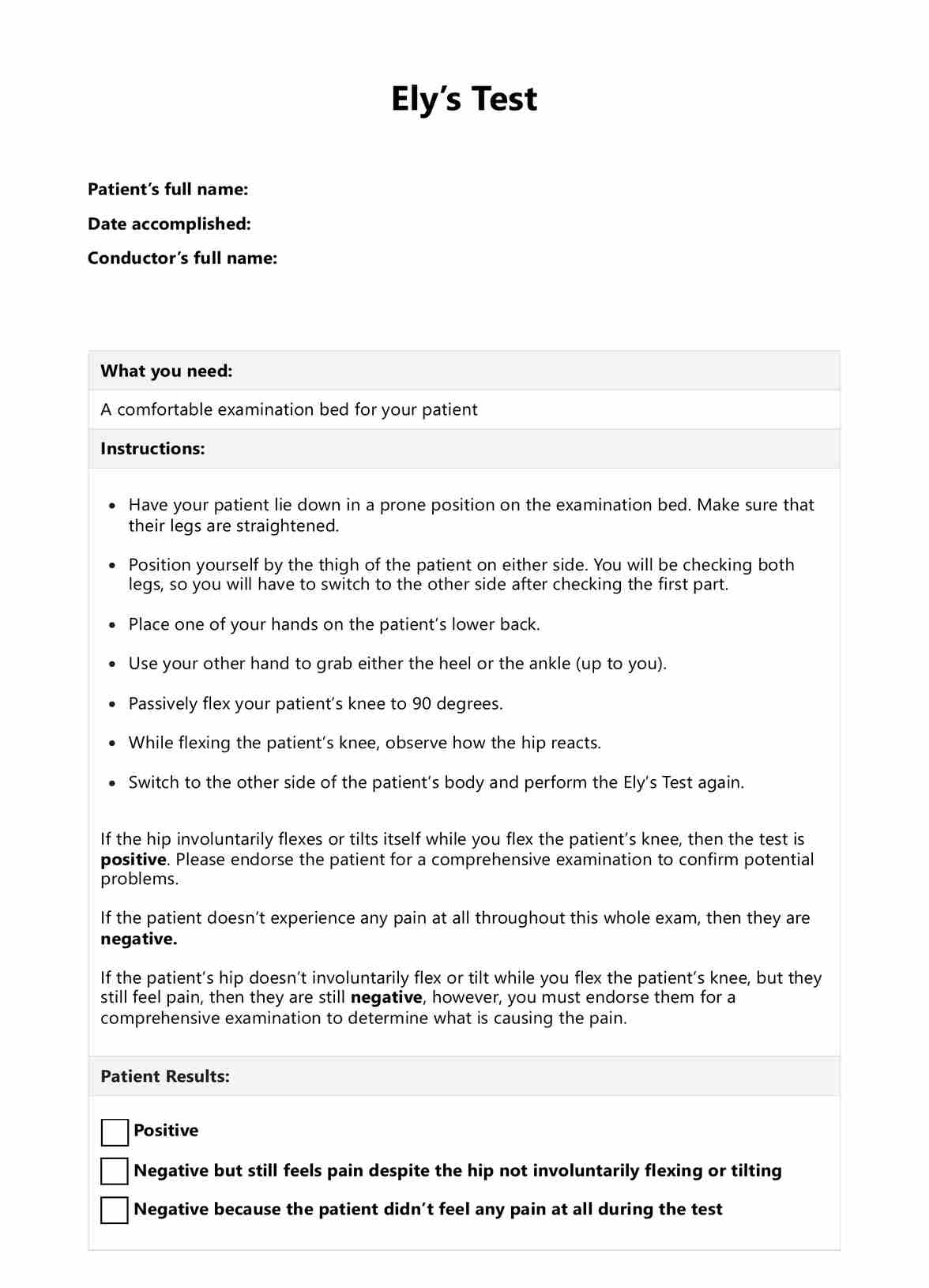That really depends on the person conducting the test, but it can take between 1 to 5 minutes, given how simple the instructions are.

Ely’s Test
If you have a patient with pains anywhere between the hip and the knee, perform the Ely’s Test to assess if the problem has something to do with their rectus femoris.
Ely’s Test Template
Commonly asked questions
It shouldn’t be since the healthcare professional will just flex the knee to 90 degrees and check if the hip involuntarily flexes or tilts due to the knee flex. Whatever pain or discomfort the patient feels will come from a pre-existing condition they have.
No. While it has positive or negative designations, it is not a diagnostic examination. It looks for a specific sign (the hip involuntarily flexing or tilting), and this sign will indicate the possibility of rectus femoral spasticity or some other condition concerning the patient's lower back, hip, or legs. Other tests will be conducted to confirm what specific problem the patient has.
EHR and practice management software
Get started for free
*No credit card required
Free
$0/usd
Unlimited clients
Telehealth
1GB of storage
Client portal text
Automated billing and online payments











